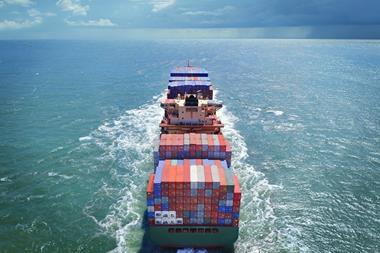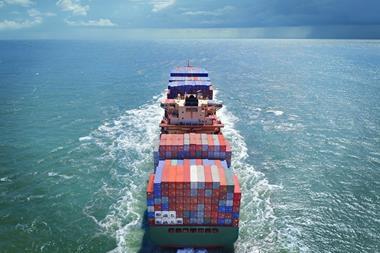Ultimate industry losses will likely be much higher with potential for the conflict to surpass 9/11
The conflict in Ukraine has already had a significant impact on the specialty lines re/insurance market, according to an advisory from PCS.
Information on losses has begun to pass through the global re/insurance market, making it possible for many in the industry to assemble a view on the possible industry-wide insured loss for the event.
PCS believes that aggregate industry-wide insured losses could exceed approximately $20 billion based on market intelligence available to date.
It is still early in the conflict, though, and the flow of information is but a trickle compared to what will likely come through when loss adjusters eventually gain access to affected sites.
As a result, the conflict in Ukraine has the potential to become the largest industry-wide insured loss, across all classes of business, in history, even exceeding that of the terror attacks of 11 September 2001.
Aviation
The conflict in Ukraine has led to intense focus on the global aviation re/insurance market, specifically the potential insured losses from policies associated with the aircraft leasing market.
Publicly reported estimates have tended to range from $5-10 billion, with even the low end potentially making this the largest aviation insured loss event in the market’s history.
As the participants closest to the risk understand, though, the ultimate loss to the market will be far more nuanced. Losses may span segments of the aviation market, rather than involving binary outcomes specific to all-risk or war-hull, PCS has learned from its worldwide re/insurance client base.
There is the potential for some loss to be borne in the air carrier market and potentially by manufacturers, through the financing arrangements in place with aircraft leasing companies.
The overall insured loss, simply, could wind up distributed across the supply chain, rather than concentrated on one particular link.
Marine
The designation of the Black Sea and Sea of Azov as war areas for marine by the Joint War Committee has led some marine market professionals to expect relatively low insured losses from the conflict, even with a reported six vessels affected so far.
There is still the possibility for insured losses to accumulate to multiple billions of dollars, though. Blocking and trapping losses, for example, take time to materialise, but if the time conditions are met, PCS clients have indicated that the inability of vessels to move freely and safely in the region makes trapping and blocking a real concern.
Energy
According to PCS market sources, most insured energy losses are expected to come from the onshore sector, with windfarms alone likely sustaining as much as $850m in industry-wide insured losses.
And of course, there are several nuclear facilities that have sustained damage or other disruption that could result in insured losses in the future, including Zaporizhzhia and potentially Chernobyl, according to public reports.
Nuclear losses tend to be expensive, as a result of the specialised labour and material needed for even the most seemingly mundane tasks, a situation exacerbated by security requirements.
For now, it is difficult to forecast a potential industry-wide impact for this sector, but client conversations suggest that industry-wide insured losses of above $2 billion seem likely, particularly with windfarms and nuclear facilities potentially accounting for half that.
Property per risk
Property per risk losses could take the longest to accumulate, given that a large number of companies could be affected, limits could be high, and business interruption could contribute significantly to any industry-wide insured loss total for this class of business.
This class of business, after aviation, could be the greatest contributor to the overall industry-wide insured loss in Ukraine.
Forty percent of the country’s gross domestic product (GDP) comes from steel and grain, with reports of several such insureds already coming through the global re/insurance community.
PCS has become aware of one such loss so far and has learned of as much as $4 billion in limit (for named companies) that are exposed to the conflict, with the understanding that many more exposures remain.
So far, it seems likely to exceed $2 billion, based on intelligence received by PCS, but as with the energy sector estimate above, it’s tough to determine more than that.
Personal and small commercial property
This category is not expected to comprise a significant portion of the industry loss, and sources suggest a likely result of $100m. Ukraine’s low rates of insurance penetration and lower insured values should keep the industry-wide insured loss for this sector manageable.
Further, recent political violence catastrophe events have shown that a disproportionate amount of the industry-wide insured loss tends to come from commercial (especially large commercial) insureds, as evidenced by the riots over the past three years: 2019 in Chile, 2020 in the United States, and 2021 in South Africa.
A note on cyber
Expectations about cyber activity have varied since the earliest days of the conflict. Some expected a much greater role for cyber, while others believe that impact from attempted cyber operations was at least dulled by preparations made in 2021.
International relations research suggests that cyber operations do not feature significantly in armed conflict because its impact would be far smaller in scale than that of kinetic activity (physical fighting). Because of this, PCS believes there’s a risk of post-kinetic cyber operations.
Essentially, insured losses from cyber would be more likely to begin and accumulate after a cessation of the conflict. Further, there is a possibility that such cyber activity would not be focused exclusively (or even predominately) on Ukraine.
Ransomware actors would benefit from state accommodation (rather than state sponsorship or direction) in pursuing worldwide targets, particularly those in western nations.
While the actions of ransomware gangs would advance an agenda involving the destabilisation of western countries, the benefits of destabilisation to the accommodating state would result from an alignment of interests rather than coordination or direction.




















No comments yet